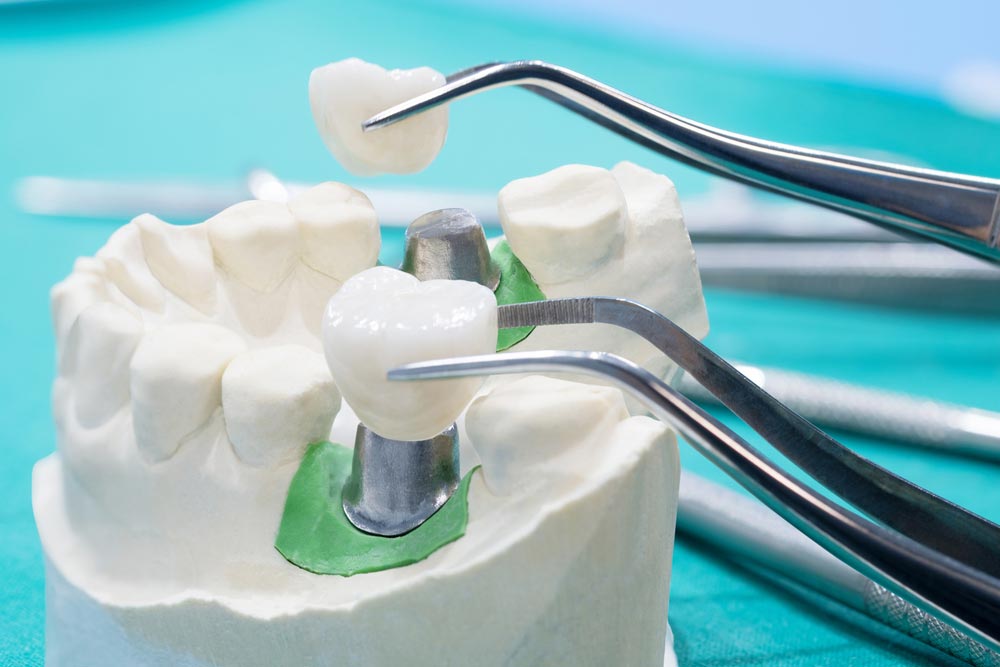Dental crowns offer more than just a cosmetic fix—they are important for restoring damaged teeth to their former strength and functionality. However, the question of how long these dental solutions will last remains a common concern among patients. This blog aims to shed light on the lifespan of dental crowns, exploring the factors that contribute to their wear and the indicators that necessitate their possible replacement.

Signs That Your Dental Crown Needs Replacement
Recognising the right time for dental crown replacement is important for maintaining oral health. Here are some signs to watch out for:
Discolouration or Cracking
Over time, crowns can discolour or develop cracks. While porcelain crowns resist staining, they aren’t immune to wear and tear. If you notice significant colour changes or visible cracks, it’s time to consult your dentist.
Sensitivity or Discomfort
If you experience increased sensitivity or discomfort around a crowned tooth, it could indicate that the crown is no longer providing adequate protection, possibly due to wear or damage.
Loose or Misaligned Crown
A crown that feels loose or seems misaligned may lead to further dental issues. This misalignment might be due to underlying tooth decay or changes in your dental structure.
What Causes Dental Crowns to Fail?
Several factors can contribute to the failure of dental crowns:
- Poor Oral Hygiene: Neglecting regular brushing and flossing can lead to plaque buildup, affecting both the crowned tooth and surrounding gums.
- Physical Damage: Accidents, teeth grinding or biting on hard objects can damage crowns.
- Wear and Tear: Natural ageing and usage can wear down a crown, reducing its effectiveness.
How Long Does a Crown Last?
While dental crowns are built for durability, they don’t always last forever. Factors such as material wear, oral hygiene and physical habits play an important role in determining their lifespan. Porcelain crowns, for instance, may chip or crack, especially under heavy use or due to accidental trauma. Additionally, gum recession can expose the base of the crown, leading to sensitivity or decay in the underlying tooth. Additionally, if the tooth beneath the crown suffers from decay or structural damage, the crown will need to be removed to address these issues.
How Often Should You Replace Dental Crowns?
The frequency of replacing dental crowns largely depends on various factors, including the type of material used, the individual’s oral hygiene habits and their lifestyle choices. Typically, dental crowns have a lifespan ranging from 5 to 15 years, but they may last even longer with proper care. Porcelain crowns, popular for their natural appearance, may need replacement after about a decade, though this can vary based on the individual’s care and use.
Tips for Maintaining Your Dental Crowns
To maximise the lifespan of your dental crown, consider the following tips:
- Regular Dental Check-Ups: Routine visits to your dentist can help catch and address issues early.
- Maintain Good Oral Hygiene: Brushing twice a day and flossing daily can keep your crowned tooth and surrounding gums healthy.
- Avoid Harmful Habits: Try to avoid habits like grinding your teeth, chewing ice or using your teeth as tools.
Contact Us for Dental Crowns
In conclusion, while dental crowns are a durable solution for restoring damaged teeth, they may require replacement at some point. If you’re experiencing any issues with your dental crown or have concerns about your oral health, reach out to our dentists at Albany Dental. We’ll provide you with dental care and advice tailored to your specific needs in Gosford.











